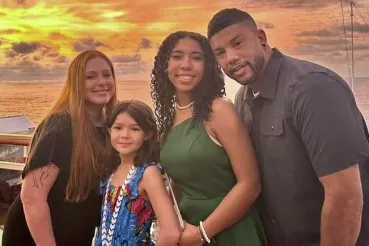Finding mental health care has become harder since the pandemic began, with some people waiting months to see a counselor. Yet an innovative program at RUSH called the Collaborative Care Program has cut that wait time down to about a week — and reduced patients’ depression symptoms by an average of 40%.
RUSH’s program is an adaptation of a model developed at the University of Washington called IMPACT, which is largely synonymous with collaborative care and in use by more than 1,000 hospitals today, says Neha V. Gupta, MD, who is both a psychiatrist and a primary care provider at RUSH.
The Collaborative Care Program — or CCP — puts primary care and mental health care providers on the same patient-centered team and utilizes licensed clinical social workers to improve access to mental health care. It also optimizes the use of technology to improve communication between members of the care team.
Why the access problem needs to be solved
A faster, better way of getting patients mental health care couldn’t come at a better time considering that the prevalence of depression and anxiety rose 25% around the world during the pandemic.
Gupta, who is the founder of the Division of Integrated Behavioral Health through the Department of Psychiatry and Behavioral Sciences at Rush University Medical Center, says stress during the pandemic has worsened existing mental health problems for many and created new episodes of depression or anxiety for others. At the same time, the collective grief of the pandemic has helped many people recognize that “it’s OK not to be OK” and to seek treatment, she says.
Even though demand is rising for mental health services, that’s not the only reason why it’s so difficult to get mental health care. The country suffers from a shortage of behavioral health care providers. President Biden discussed the need for better mental health care during his State of the Union address and has proposed integrating mental health care services in primary care settings. The new model at RUSH is an innovative example of efforts to build more capacity to address this problem, Gupta suggests.
Less than half of U.S. adults with a mental illness get the care they need, and the average delay between the appearance of mental health symptoms and treatment is 11 years. The consequences of delayed mental health care can be significant. Research shows when patients don’t get care for depression, their mental and physical health declines.
How collaborative care works at RUSH
Unlike earlier collaborative care models, the CCP at RUSH utilizes licensed clinical social workers who work with patients virtually, rather than in person in the clinic. This adaptation is especially timely, as “virtual visits” have become more widely accepted during the pandemic.
In the past five years, Gupta and her team have expanded the model from being piloted in four clinics to now being used daily at nearly 70 clinics at RUSH, including some specialized settings like cancer clinics where patients too often can develop depression and anxiety along with their physical health challenges.
At RUSH, licensed clinical social workers serve as behavioral health care managers for more than 1,000 patients each year. Gupta believes their unique training helps them think about the “whole” patient, including the social factors that can affect their mental and physical health. “Social workers are arguably the best ambassadors and advocates for patients,” she says.
When patients come to one of the clinics where the CCP operates, they are screened at least once a year for depression with a few simple questions, and Gupta’s team also regularly coaches frontline staff on specific conversations that draw out warning signs of depression. If their screening or those discussions suggest they may have depression, they will receive a call from a behavioral health care manager within seven days. This saves the patient the hassle of having to get a referral and then set up an appointment with a therapist on their own, which can be especially challenging given the scarcity of specialists.
Patients appreciate the convenience of the model and the fact that RUSH staff connect them to the care they need. “I knew I wasn’t my normal self for quite some time, but the thought of then finding a psychiatrist was intimidating,” noted one patient on a feedback survey. “Having someone then call me really opened a door to my taking control of my mental health.”
During that initial call, behavioral health care managers will talk with patients about their symptoms, concerns and treatment goals. They also can help them find safe housing, healthy food or other resources, if needed.
If the care team determines that a patient’s depression can be managed through primary care, the behavioral health care manager will set up an hourlong assessment with the patient by phone the following week, so there’s no need to visit the doctor’s office. After the assessment, the behavioral health care manager has a “virtual consult” with a psychiatrist, and together, they develop a treatment plan for the patient. This plan typically includes monthly coaching and counseling provided by the social worker until the patient’s symptoms improve.
Throughout this process, the social worker, primary care provider and the psychiatrist communicate about the patient through the electronic health record. If a patient needs antidepressant medication, the team will work together to develop a plan, monitor any side effects and document the patient’s progress. At any time, if the care team determines that the patient would benefit from working directly with a psychiatrist, the behavioral health care manager can make that connection for the patient.
Michael Hanak, MD, a family physician and associate chief medical officer of population health at RUSH, believes this team approach can help reduce barriers to care for many who need treatment. “This program allows us to treat the whole person instead of referring out to a waiting list that is literally many months long,” he says.
Supporting primary care providers
Currently, four social workers provide support for patients in nearly 70 clinics at RUSH, demonstrating how scalable such a model can be, Gupta says.
“Primary care providers are well-equipped to identify and treat conditions like depression and anxiety. In fact, the symptoms of depression are often the reason people see a primary care doctor. But those doctors often need more access to and support from behavioral health teams, not just the psychiatrist,” Gupta says. “We are empowering all members of the team — the primary care providers, the behavioral health care managers and the psychiatrist — and engaging them in a way that’s clinically relevant and useful.”
For Amanda Cuca, DNP, a nurse practitioner at RUSH, the CCP has given her the support and confidence she needs to treat patients with depression.
“I have become exponentially more comfortable managing depression in my primary care practice,” Cuca says. Working with a consulting psychiatrist and a team of social workers has helped her feel more confident prescribing antidepressants to patients who do not respond to other treatments. And because she can treat many cases herself, her patients do not have to wait for a referral to a psychiatrist, so they get the care they need more quickly.
40% drop in depression symptoms
Through the program, primary care providers at RUSH have screened more than 1,000 patients each year for depression. Among patients assessed before and after treatment, depression symptoms were reduced by an average of 40%, with even greater improvement among patients who stayed in the program for more than 12 weeks.
Based on these promising results, Gupta believes the CCP at RUSH can serve as a model for other organizations that are looking to improve patient access to mental health care. She plans to measure the program’s potential cost savings, which may be achieved in part by reducing emergency room visits from patients with worsening depression who are unable to get treatment for weeks or months. “At that point, the cost of care is high but imagine the cost to their well-being,” Gupta says. Because collaborative care has the potential to lower costs and improve patient health, many public and private insurance plans have shown an interest in these models.
Gupta and her colleagues have also started this collaborative care approach in pediatric clinics for children and adolescents with behavioral health needs, as many young people have also suffered from increased depression and anxiety during the pandemic. “We want to help children and adolescents get the resources they need, which a lot of the time, is therapy as soon as possible,” Gupta says. “And when your child’s pediatrician says mental health care is needed, the thought of waiting months for that care takes a toll on the parent as well.”
Learn more about the RUSH approach to depression.




